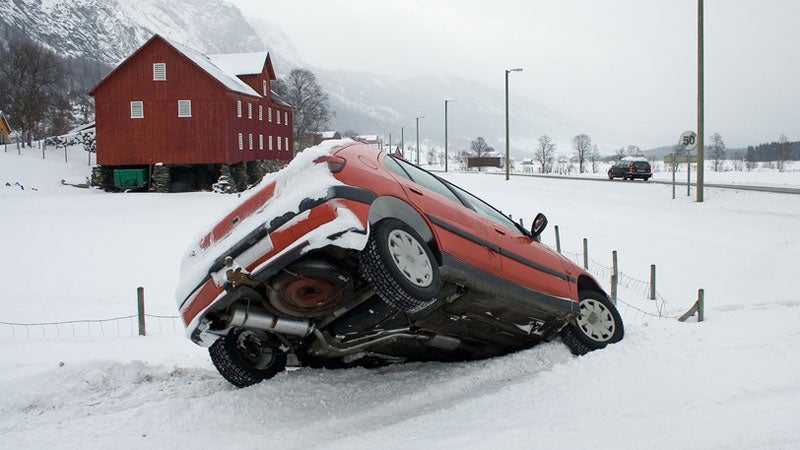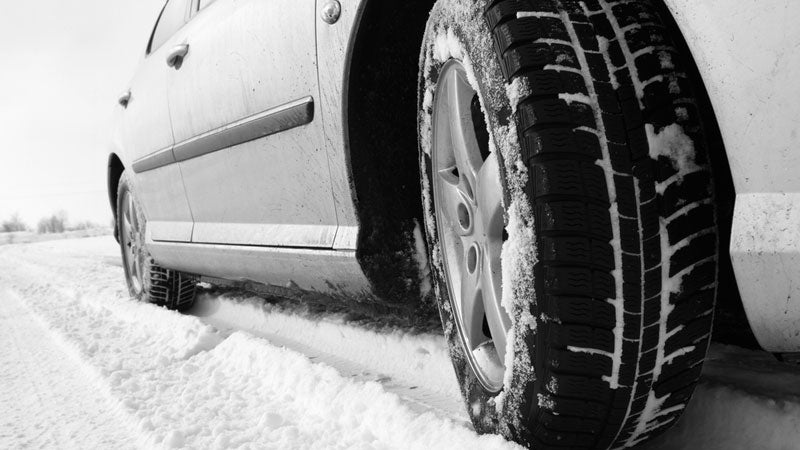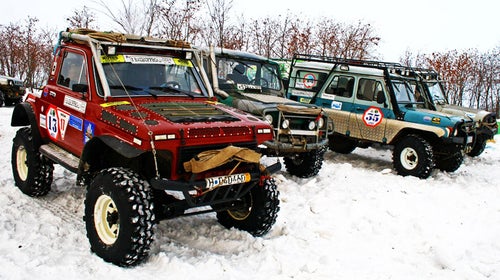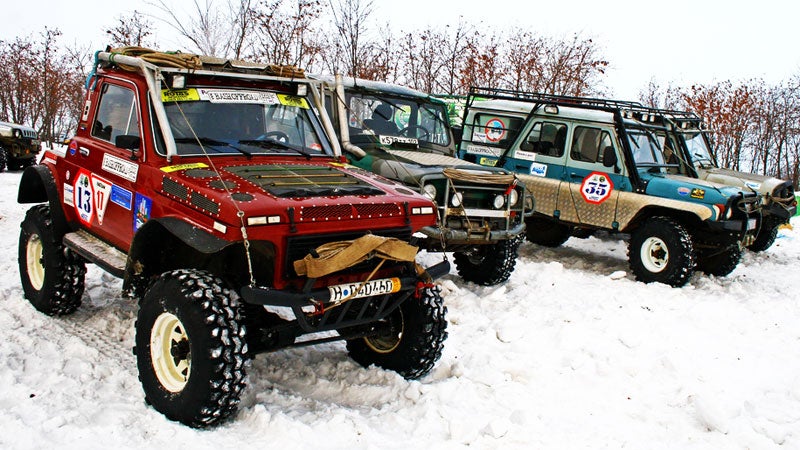Confidence in your skills and your vehicle is everything when it comes to winter driving, says Kurt Spitzner, operations manager and instructor at in Steamboat Springs, Colorado. “Accidents happen when you second guess yourself. It’s time wasted when you’re in a skid that you need to respond to.”
In winter—presuming you live in an area with snow, sleet, freezing rain, slush and the other slippery conditions—your traction is reduced to a fraction of what it is in fair weather. When you’re driving in winter, you need to recalibrate your expectations about how long it will take you to stop, how quickly your car will respond when you turn the wheel.
According to Spitzner, whether you have all-wheel drive (AWD), four-wheel drive (4WD), front-wheel drive (FWD), or rear-wheel drive (RWD), the skills you need to hone for winter driving are the same. The only advantage that 4WD and AWD cars have in winter is they accelerate faster from a stop. But 4WD and AWD vehicles don’t turn or stop better than two-wheel drive. So, even if you have an AWD vehicle with snow tires, you still need to slow your speed and lengthen your stopping distance.
“Don’t overestimate what 4WD or AWD can do for you,” says Spitzner. “But do know how to make your car’s safety features work for you.”
To become a winter driving pro, invest in the proper tools, such as snow tires, and in yourself by practicing real world skills.
Spitzner’s Top Tips For Winter Driving
1. If the conditions are beyond your abilities, don’t take undo risk; know when to say when. Use weather apps or sites to investigate what Mother Nature has in store for you not just at your destination, but also along your route. Dial 5-1-1 for road conditions and closures. Then make an educated decision.
2. Take the time you need to get to your destination safely. Don’t speed.
3. Be aware that snow and ice changes by the minute, which in turn changes available traction. At any given spot, traction also changes with each car that passes by. Don’t base your braking or turning decisions on other cars.
4. Look as far down the road as you can. Always know where you want to go. “You need to be able to see a situation so that you can respond,” Spitzner says. “If you’re driving off the edge of your hood, things aren’t going to go well. By the time you respond, what you were responding to is history.”
5. Know how to use your antilock brakes (ABS), which prevent you from effectively turning your tires into skis and skidding them along the nearest highway. A rolling tire has more grip than sliding tire. ABS prevents a slam on the brakes from locking up the wheels into a skid. The system forces the wheels to shudder forward and find traction.
6. It’s okay to hit antilock brakes hard for maximum power. The tires won’t lock—your car’s computer will manage the hydraulic pressure and bring your car to safe smooth stop. If you squeeze the pedal lightly, you won’t tap your car’s maximum slowing power.
7. Stability control works in conjunction with ABS. All passenger-carrying vehicles are now required to have this feature, which selectively applies braking pressure to one side or the other when your car is skidding sideways to keep the vehicle as straight as possible.
8. If you are a well-trained, experienced driver with proper tires, threshold braking is better than slamming on the ABS. Squeeze your brake pedal lightly to the point of imminent lockup but not so far you skid.
9. When you need to stop ahead, brake early and give yourself the luxury of easing off your brakes at the end of your stop.
10. Tires do their best job when they only have to do one thing at a time. Brake first, then turn; don’t try to do both at once. Otherwise, you are dividing the available grip between two different tasks. Neither will get full power.
11. An understeer skid—when you turn your wheel but the car doesn’t respond—happens when you’re going too fast. Look where you want to go. Back off the steering, and let your tires find traction. Do not brake, otherwise you are asking your tires to do two tasks.
12. In an oversteer skid, when the car turns more than you expect, don’t apply your brakes. Look in direction that you want to go, steer the car there and use a little throttle or no throttle.
13. Black ice often occurs at dusk. The road will have a sheen, and the noise of the car on the road will become quieter. Turn the stereo off, stop talking on the phone, tell your passengers to hush, and focus on what you’re doing. Do not wiggle the steering wheel or tap the brakes to see if you are on ice. To slow your vehicle, smoothly ease off the throttle and progressively apply the brakes. Make turns as gently as possible. Keep your head up, look up, and point the vehicle where you want it to go.
14. The only time that momentum is your friend is on a hill. Maintain speed going up a hill, and avoid the polished ruts where others have driven before you. Drive in the snow if it’s an option. Snow always has more traction than ice.
Need some help building your skills? has been teaching drivers how to manage snow, sleet, slush, and ice from behind the wheel—in a Lexus—for 30 years. Based in Steamboat Springs, Colorado, Bridgestone’s Second Gear course covers braking, identifying, and responding to skids, accident avoidance, control in turns, and regaining control of your car.
Emergency Safety Kit

If you do skid off the road, you want to make sure you have what you need to be safe and comfortable until help arrives. Stash these items in your car for the winter:
1. An ice scraper and brush
2. Flares and orange hazard triangles to alert other drivers that there is a disabled car ahead
3. Snacks and water—sustenance in case you’re stuck for a while
4. A space blanket to keep you warm if you’re car isn’t running
5. A collapsible shovel to dig your car out of a snow bank; can also be used to clear your exhaust pipe to prevent toxic exhaust from backing up into the car
6. Chains or winter driving cables to help you get unstuck or to navigate challenging conditions before you have a problem
7. A towrope from an auto parts or off-road vehicle store. Buy a rope at least 50 feet long and make sure your vehicle has a fitting to attach the towrope to. If you have a hitch, install a U-bolt
8. First aid kit for basic medical care, along with any critical medications—Spitzner recommends at least two days worth
Winter Tire Primer

To drive well in winter, you need winter tires. Without them, you’ll have significantly less traction when you’re driving. All-season tires might have an aggressive tread pattern, but tread makes little difference according to Spitzner. The grip is all in the rubber.
Successful winter road travel is all about what connects your vehicle to driving surface. Winter tire compounds are sticky and grippy even in sub-zero temperatures. All season tires, in contrast, are much harder, and lose performance below 20 degrees Fahrenheit.
There are two types of winter tires: studded and studless. Studded tires are banned in some states and their use is limited to particular months in others. They tear up road pavement. But the good news is that thanks to modern winter rubber compounds, a non-studded tire will almost always have better traction than a studded one.
When you’re buying winter tires, don’t get a bigger tire than recommended by your car manufacturer advises Spitzner. “Fatter tires are worse in winter than skinny ones,” he says. “Narrower tires bite through snow better. And it’s an old wives tale that winter tires don’t last. Manufacturers have refined winter tire compounds to give decent wear.”


